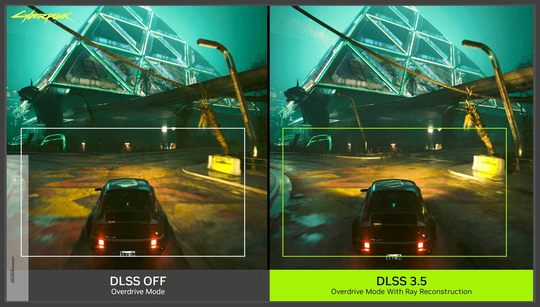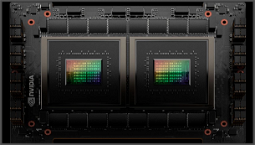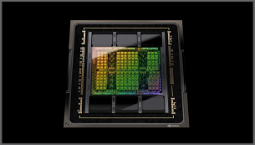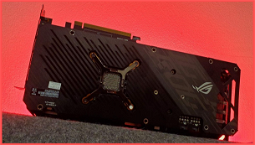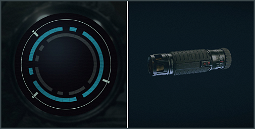Nvidia DLSS 3.5
Nvidia has announced DLSS 3.5, an update to its Deep Learning Super Sampling technology that should provide a performance boost and enhance the visual quality of ray traced scenes. DLSS 3.5 utilises AI technology, specifically Ray Reconstruction, to improve image fidelity. Nvidia says the new algorithm replaces traditional denoisers in the graphics pipeline, resulting in a slight increase in performance.
From my experience with DLSS 3.5, the difference in fidelity is evident. Improved lighting effects and reduced noise give scenes a more crisp, clear look. The performance increase varies depending on the game and the type of Ray Tracing used, but I’ve seen a boost of around 10-15fps in Cyberpunk 2077 using path tracing.
The latency of Ray Reconstruction isn’t affected, meaning it’s a potentially attractive option to enable if you’re not concerned about the potential for slightly more frames being dropped. However, given the technology is exclusive to Nvidia platforms, it’s unclear how easy it will be for game developers to implement.
According to Nvidia, “Game developers may need to make changes in the pipeline to accommodate the new AI algorithm. Existing games cannot simply add the new .dll files to enable the feature.” Despite this, I imagine many gamers will experiment with DLSS 3.5 when it’s released, simply because it offers a no-brainer solution for improved visuals and potential frame rate gains.
The update is certainly something PC gamers have been waiting for, but it’s important to note that the technology won’t be available on every game right away. Only a limited number of games will support DLSS 3.5 at launch, but Nvidia says it plans to add more as time goes on.
Nvidia DLSS 3.5 release date
